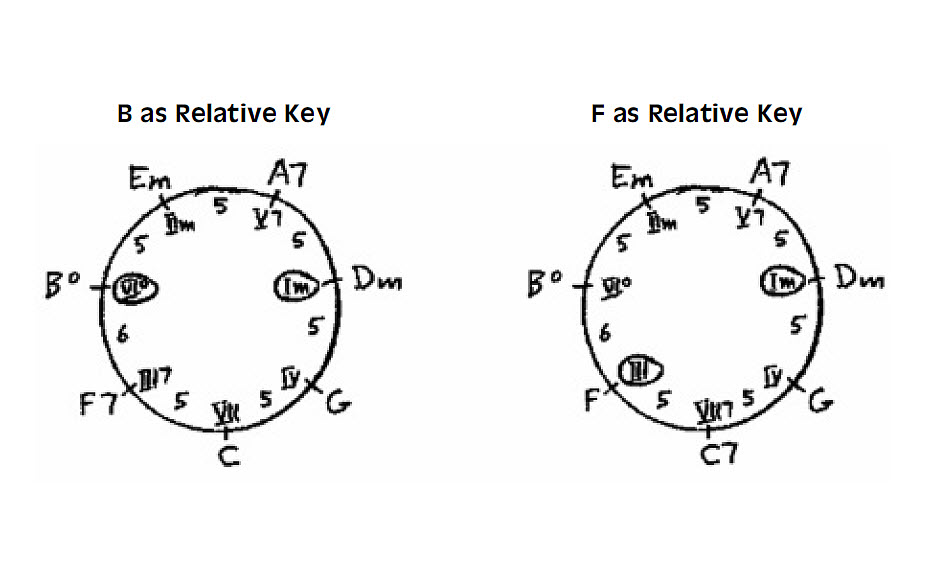You Are Reading the First 6 FREE Chapters (470 pages)
6.16.2
Dorian Scale, Chords, and Relative Keys
To hear what a Dorian mode scale sounds like, play the white keys on the piano beginning and ending with D:
D – E – F – G – A – B – C – D
It's the same as the natural minor scale, except with a natural 6th.
(Remember, you can play a Dorian mode scale beginning with any note—it doesn’t have to be D—so long as you preserve the order of tones and semitones for the mode.)
Dorian chords would be triads built on those notes as chord roots. The Dorian mode is considered to be a minor mode because the third note of the scale forms a minor third interval with the tonic note (in the above example, D – F). So the “tonic chord” of the Dorian mode is a minor chord, Dm, in this example (the notes D, F and A).
As shown in the example below (Figure 123), there are two possible relative keys: one with the note B as the tonic, the other with the note F as the tonic. No others are possible because their chords would overlap with one or more of the chords of the modal key.
When you apply the above-listed circular harmonic scale rules to the Dorian mode, you get two possible versions. One version has the VI chord (B in the example below) as the tonic of the relative key, the other has the III chord (F in the example) as the relative tonic.

FIGURE 123: Chord Map of Dorian Mode Circular Harmonic Scales

